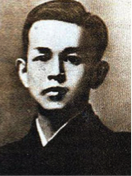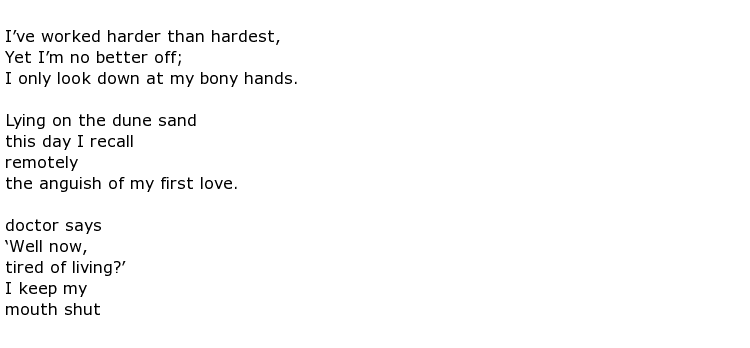 Takuboku Ishikawa was a Japanese poet of the early 20th century whose life was tragically cut short by tuberculosis. His writing mostly followed the classical tanka style, although sometimes he used a “modern” or “free-style” method. His early work showed that he favoured naturalist subjects as favoured by the Myojo group but, later, he renounced this style in favour of the “socialist” method of writing.
Takuboku Ishikawa was a Japanese poet of the early 20th century whose life was tragically cut short by tuberculosis. His writing mostly followed the classical tanka style, although sometimes he used a “modern” or “free-style” method. His early work showed that he favoured naturalist subjects as favoured by the Myojo group but, later, he renounced this style in favour of the “socialist” method of writing.
He was born on the 20th February 1886 in the Joko Temple, Hinoto-mura. His father was the resident priest at this temple who moved the family to Shibutami-mura one year later. Takuboku had a standard education of elementary, upper elementary and then middle school up to the age of twelve. The boy had a talent for writing, even so early, and at the age of thirteen he published a literary booklet called Choji-kai which was printed using a hand method known as hectograph.
He saw the value in learning the English language and set up a self-study group to further that aim. He was writing tanka poetry which first appeared around the years 1901-02 in newspapers such as Iwate Nippo, and he used the pen name Suiko for this work. He saw no point in remaining in middle school, having ambitions to write in order to make a living, so he took himself out of school. He returned to his home village in 1903 and started using the pen name Takuboku as a member of a circle of fellow poets known as Shinshisha.
As well as writing poetry, he also kept detailed diaries and he wrote these in a kind of Latin/Japanese amalgamated form in order to maintain his privacy, in particular from his wife Horiai Setsuko, who he married in 1905. At least two volumes of tanka poetry have been attributed to him. The first was published in 1910 under the title A Handful of Sand and the second, called Sad Toys, came out two years later but this did not see publication until after his sad death. Many of his poems are only three or four lines in length, and here are three examples of this kind:

The outbreak of the Japanese-Russo war prompted a number of articles which took the form of a personal memorandum of war time (Senun Yoroku) and these first appeared in 1904, serialised in the Iwate Nippo newspaper. Between 1906-07 he was teaching at two separate middle schools while, at the same time, working as freelance reporter for the Hakodate Nichinichi Shinbun newspaper. A series of similar journalistic assignments followed while, all the time, he was writing poetry and doing the occasional spot of proof reading.
By 1911 his health began to suffer – it seemed that the environment in which he was living did not suit him, and he moved to Koishikawa in the hope that things would improve. During the early months of 1912 he lost his mother and it may be that this tragedy had an adverse effect on his health. He contracted tuberculosis and did not survive this illness which claimed so many lives during the early 20th century.
Takuboku Ishikawa died on the 13th April 1912 at the tragically early age of 27. His grave remained relatively anonymous until 1926 when a suitable memorial was installed due to the efforts of his brother in law, a fellow poet, and the chief of Hakodate Library. Both clearly recognised his value as a tanka poet.

